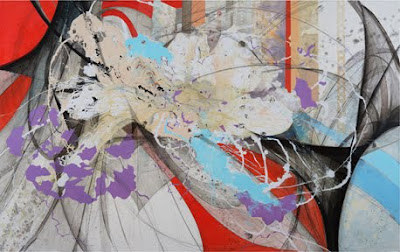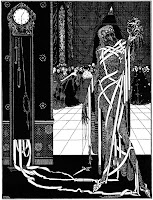
He went rapidly towards the bottom. Did he reach it? It was said to be three miles to the bottom. After sinking sixty or seventy feet, he began moving more and more slowly, swaying rhythmically, as though he were hesitating and, carried along by the current, moved more rapidly sideways than downwards.
After that another dark body appeared. It was a shark. It swam under Gusev with dignity and no show of interest, as though it did not notice him, and sank down upon its back, then it turned belly upwards, basking in the warm, transparent water and languidly opened its jaws with two rows of teeth. The harbour pilots are delighted, they stop to see what will come next. After playing a little with the body the shark nonchalantly puts its jaws under it, cautiously touches it with its teeth, and the sailcloth is rent its full length from head to foot; one of the weights falls out and frightens the harbour pilots, and striking the shark on the ribs goes rapidly to the bottom.
Overhead at this time the clouds are massed together on the side where the sun is setting; one cloud like a triumphal arch, another like a lion, a third like a pair of scissors. . . . From behind the clouds a broad, green shaft of light pierces through and stretches to the middle of the sky; a little later another, violet-coloured, lies beside it; next that, one of gold, then one rose-coloured. . . . The sky turns a soft lilac. Looking at this gorgeous, enchanted sky, at first the ocean scowls, but soon it, too, takes tender, joyous, passionate colours for which it is hard to find a name in human speech.

 He went rapidly towards the bottom. Did he reach it? It was said to be three miles to the bottom. After sinking sixty or seventy feet, he began moving more and more slowly, swaying rhythmically, as though he were hesitating and, carried along by the current, moved more rapidly sideways than downwards.
He went rapidly towards the bottom. Did he reach it? It was said to be three miles to the bottom. After sinking sixty or seventy feet, he began moving more and more slowly, swaying rhythmically, as though he were hesitating and, carried along by the current, moved more rapidly sideways than downwards.


